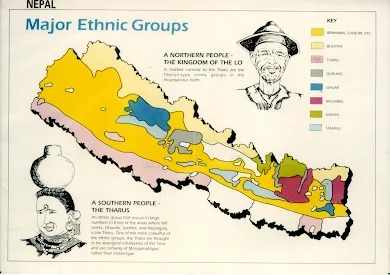Public
Attracted by the legends of the gold of Dacia some 1100+ years ago a group of the Magar people, mercenaries for hire at the foots of Himalayan mountains moved probably following or escorting a caravan together with their women on the silk road, all the way to central Europe.
They could not find gold when they arrived, the part that was easy to exploit was gone and because they had no land and no skills for the local type of agriculture they started to raid eastern and western Europe for about 100 years until about year 1000 when they settled and catolicized and enslaved the local Daco-Roman (modern Romanian) population by closing a large part of their territory west of Carpathian mountain by placing their allies, the Székelys sometimes also referred to as Szeklers, a Turkic nomadic people (from which they borrowed a large part of their language which still has the magar core), at east, near the mountains and themselves at west near the eastern border of the Holy Roman Empire, in the place once inhabited by the Huns.
When late medieval states started to form all over Europe, Hungary as we know it emerged from the union of thee different people, the Magyars, The Székelys and some Germans settlers they invited to close another area of the border, south of the The Székely, again, ignoring the Romanian majority, caught in the middle.
https://en.wikipedia.org/wiki/Unio_Trium_Nationum
By constantly borrowing DNA and cultural elements from the west combined with their natural unique abilities, among which the mutations that allowed them to survive at high altitude, making them stronger and smarter then others when they descended, with a constant but curbed by the surrounding people growth in numbers and an economic stability insured by their slaves or serfs, they became a very strong combination of qualities before spreading throughout the world after WWI and WWII.
They could not find gold when they arrived, the part that was easy to exploit was gone and because they had no land and no skills for the local type of agriculture they started to raid eastern and western Europe for about 100 years until about year 1000 when they settled and catolicized and enslaved the local Daco-Roman (modern Romanian) population by closing a large part of their territory west of Carpathian mountain by placing their allies, the Székelys sometimes also referred to as Szeklers, a Turkic nomadic people (from which they borrowed a large part of their language which still has the magar core), at east, near the mountains and themselves at west near the eastern border of the Holy Roman Empire, in the place once inhabited by the Huns.
When late medieval states started to form all over Europe, Hungary as we know it emerged from the union of thee different people, the Magyars, The Székelys and some Germans settlers they invited to close another area of the border, south of the The Székely, again, ignoring the Romanian majority, caught in the middle.
https://en.wikipedia.org/wiki/Unio_Trium_Nationum
By constantly borrowing DNA and cultural elements from the west combined with their natural unique abilities, among which the mutations that allowed them to survive at high altitude, making them stronger and smarter then others when they descended, with a constant but curbed by the surrounding people growth in numbers and an economic stability insured by their slaves or serfs, they became a very strong combination of qualities before spreading throughout the world after WWI and WWII.
10
Shared publicly
Hide 4 comments
- Here one more interesting fact about the Magyar language. A work publicized by a Japanese publishing house in... Germany, written in English, about the similarities of the Japanese and Magyar languages. It is very interesting as many of today's linguists say Japan is a very unique language and not related to any others. However they are using Chinese writing and many Chinese words, probably some Korean as well and others. So we can think after reading this work which BTW is a specialty one for the small world of linguists that Japanese might have descended as well from Nepal?
drive.google.com - Kazar_Lajos_JAPANESE_URALIC_LANGUAGE_COMPARISON.pdf - Google DriveREPLY Jun 20, 2017 - Jun 20, 2017
- In 2014 Helental et al published a study illustrated by an interactive web site which follows the genetic ancestry of different populations around the world. However the number of people of which the DNA was sampled is small in regards to the ambitions of this project. Private entities around the world, think tanks, states, probably have much more detailed informations about the same subject.
http://admixturemap.paintmychromosomes.com/
http://science.sciencemag.org/content/343/6172/747REPLY Jun 20, 2017 - Jun 21, 2017
- Jun 21, 2017
- Can't find any prooof yet but i came to believe, mostly from personal experiences of the near encounters that their use of women as weapons of war is of ancient origin and embedded and accepted in their culture.
War in ancient India had some particularities. It was fought between members of the warrior caste and peasants, women and children were safe and could go about their daily business in area close to where battles where taking place. Could some have learned using this immunity to infiltrate the enemy or even seduce and ambush them.
Magars where known in ancient times as mercenaries, could they have use this tactic.
Could not find much right away on a hunch except this account of an ancient Indian military adviser.
“should make chiefs of the ruling council infatuated with women possessed of great beauty and youth. When passion is roused in them, they should start quarrels by creating belief (about their love) in one and by going to another.”
http://www.defencejournal.com/2003/mar/kautilya.htmREPLY







No comments:
Post a Comment